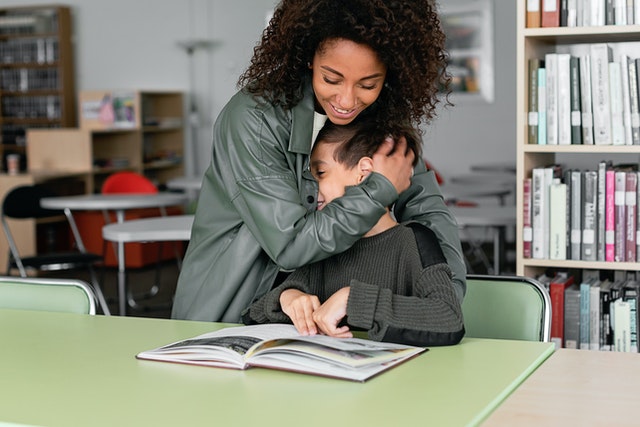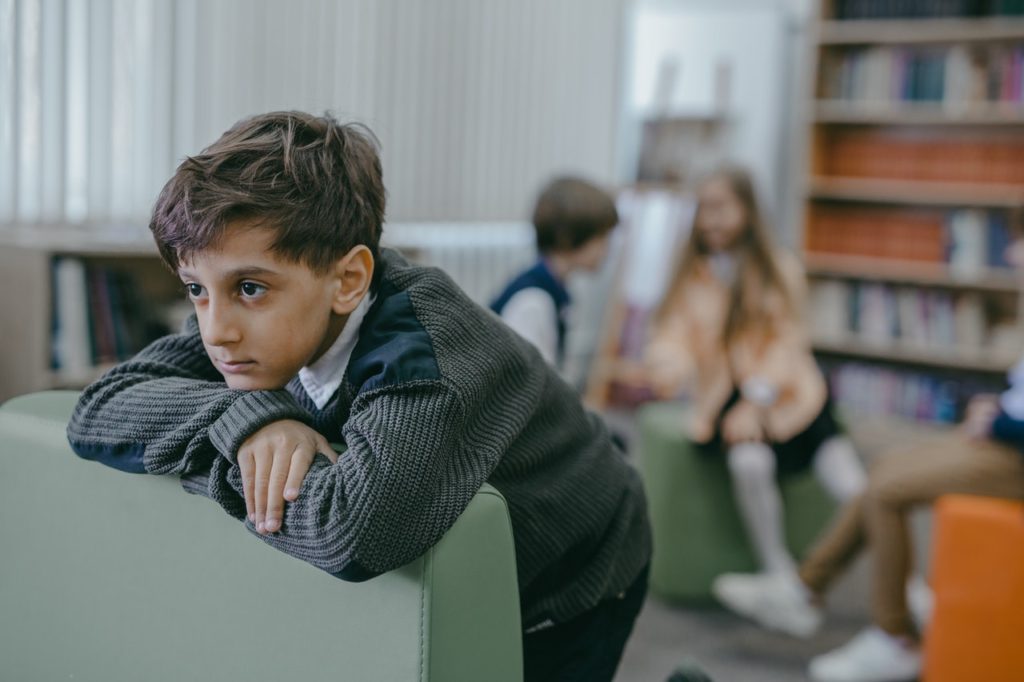Table of Contents
New environments can be uncomfortable for anyone. The sense of discomfort from being in a new location or space can cause people to fidget, hide in a quiet corner, and seek out some sense of familiarity. This feeling is often particularly heightened for people with autism spectrum disorders (ASD). A new learning environment for students with autism can be overwhelming and cause them to be unable to focus on anything but their discomfort in the new space.
While discomfort with new situations is totally normal, students with some types of autism spectrum disorders may find it very difficult to transition to new spaces and participate in activities. Teachers of students with autism spectrum disorders sometimes choose to modify activities for students with autism so that they don’t have to be uncomfortable in the new environment and allow them to do work in a comfortable safe space
While this may seem kind, a teacher’s job is to push students out of their comfort zone and better prepare them for the challenges they will face in their future. Creating a comfortable learning environment for students with autism doesn’t mean segregating them into a separate space, but utilizing strategies to help them be more comfortable in whatever environment they find themselves.
Students with autism spectrum disorders will not always be able to avoid going to new places and being with new people, nor should they. However, recent research reveals a key way that teachers can support their students with autism to feel safer and more comfortable as they venture out of their comfort zone. This article will discuss that research along with giving a few simple interventions to utilize the information from this study to help students in a new class or when on field trips and create a safer feeling learning environment for students with autism.
New Research on Autism and Environment
Recent research from the Friedrich Miescher Institute for Biomedical Research showed in a mouse model how familiar objects can reduce self stimulating and antisocial behaviors in rats who have markers of certain types of autism. The research centered on a gene called “SHANK3” which when mutated causes several behaviors associated with autism in humans such as antisocial behavior and repetitive self stimulating movements.
Mutations in the SHANK3 gene led to increased dopamine signaling in a region of the brain called the Tail of the Striatum (TS) which is associated with sensory processing. This is significant because sensory processing is also an area that is known to be significantly affected in people with several autism spectrum disorders. This sheds a bit of light into why people with autism spectrum disorders may struggle with new environments due to the increased sensory stimulation and lack of familiarity in what they are processing.
Researchers began the study by placing mice into a new totally empty enclosure for 10 minutes before returning them to their original homes for 24 hours. After the 24 hour period, the mice were returned to the new enclosure, however this time there was either an object or another mouse that they had not been exposed to before. While control mice were quick to explore the new objects or interact with their new mouse friend, mice who had the SHANK3 mutation showed hallmark signs of autism by repetitively grooming themselves and refusing to interact with the unfamiliar stimulus.
The researchers found, however, that if they included something familiar to the mouse into their new enclosure, both control mice and mice with the SHANK3 mutation interacted with the unfamiliar objects and other mice. While the tail of the striatum was pumping out a large amount of dopamine in the initial experiment where no familiar items were included, in the new enclosure including something familiar led to not just social and curious behaviors in all of the mice but also reduced dopamine signaling in the tail of the striatum. This gives strong evidence that this connection between sensory stimulation and dopamine signaling in the tail of the striatum is implicated in antisocial behaviors and self stimulation when uncomfortable in new environments.

The findings from this study connect in well with other research on autism and unfamiliarity previously conducted on familiar vs. unfamiliar adults. Research conducted by Amy Vaughan Van Hecke from the University of Michigan compared how different children reacted to adults reading them a story. While all children reacted with less comfort to the stranger reading them a story when compared with someone familiar, participants who had autism spectrum disorders (ASD) had a lowered ability to regulate their heart rate when being read a story by a stranger.
“ASD children decreased regulation of the heart while viewing an unfamiliar person stimulus. Children without autism did not show such a decrease. Thus, it may be that unfamiliar people are particularly “threat-inducing” stimuli for children with autism. Children with autism may react to the unfamiliar person with a “precautionary” mobilization to fight or flee” (Van Hecke et al.)
So a lack of familiarity, whether it be in the form of a new adult, new peer, or even an unfamiliar object can result in students with autism spectrum disorders having an increased stress response and cause them to feel the need to seek out familiarity and self-stimulate. This research is important because it shows that while all children struggle with new situations, students with autism spectrum disorders will need special consideration when being placed in new environments, especially if that also includes many new people for them to interact with.
Teacher Takeaways on Autism and Environment
School can be a very challenging environment for students with autism spectrum disorders, especially at the beginning of a new school year. Because of this some may feel that these students need to be placed in separate classes with special education teachers that don’t change year after year.
While this may work in the short term to make the student more comfortable and even able to focus on learning better, schools should be wary of only thinking about their own context when working with students. Eventually all students with and without learning difficulties will graduate and need to be able to learn to work in new contexts, with new people, in new places. Teachers should not isolate students that work differently from others, but instead work to create a more comfortable learning environment for students with autism as well as other students who may have trouble integrating as quickly as others.
While it may be more difficult for students with autism spectrum disorders to get comfortable in a new class each year, that doesn’t mean it isn’t good for them. Thanks to this research, however, there are a few strategies that teachers can implement in order to make transitions to new grades smoother and allow for students with learning difficulties to participate in more types of activities such as field trips. The interventions don’t need to be huge or long term to be effective, but they will require a solid knowledge about the student and what they need to feel safe.
Firstly, when moving to a new grade, while it might not always be possible for last year’s teacher to come to a few classes due to having a whole new batch of kids themselves, sometimes other learning support psychologist, or counseling specialists can be present for a while to help the student settle in and get familiar with the new class. Many times, especially when students have a severe learning difference, they will already have been in contact with support staff and this relationship can be leveraged to help integrate a student who would otherwise simply shut down.
Just having an adult they are comfortable with come in for the first day or even just the first hour can make a world of difference. The trusted adult can help them get acquainted with the new teacher, new class rules, and maybe even make a friend or two.
This transition time isn’t just useful for the student, but can also be beneficial as a time to help the new teacher get a basic understanding of their new student with learning differences and pass on some teaching or intervention strategies that work for their shared student. This will better prepare not only the student for their new teacher, but the new teacher for their new student.

If the school is small or there simply isn’t time or staff to have students be accompanied for a while, that doesn’t mean there is nothing familiar that they could bring with them. Whether it is a new class or just a field trip, letting students with autism spectrum disorders bring along a small toy, picture, or other comfort item can help them feel safe and increase their ability to control their stress responses.
While all of these interventions are helpful for the student, there should be a mindfully developed timeline on how these scaffolds should be removed. For example, while it is great that the student may have a close connection with the school counselor, they need to learn to not be completely reliant on being with them at all times in order to be able to get work done.
Oftentimes school staff can be so focused on reducing stress and making learning easier that they put in too many supports to prop up their students’ areas of weakness. When the student graduates or goes to a new school which can or will not put in so many supports, this can actually lead to the student being less capable in the future.
Just as eventually a cast needs to be removed from a broken leg, students with learning difficulties need to be pushed to better themselves and become more independent. While autism is not something that can be, or needs to be “fixed” like a broken leg, that doesn’t mean that these students can’t improve in their areas of weakness and learn to be more flexible. There is no need for students with autism spectrum disorders to learn to be exactly like others, but there is certainly a need for them to learn how their mind works, find ways to advocate for their needs and independently manage their stressors.
Conclusion
Students with learning difficulties, just like all students, have strengths and weaknesses. Though the approaches to get to independence might look quite different for a student with a learning difficulty, especially autism, that doesn’t mean that they can’t reach the same levels of independence and success as any other student.
Creating a supportive learning environment for students with autism not only benefits those students, but can help classrooms refocus from pull out models which isolate students who are different to universally designed classrooms that work for all students. If teachers can keep in mind the times that will be most difficult for their students and put in appropriate temporary scaffolding to support them through the hard times, they will be more capable of moving forward with confidence.
Want more like this? Make Lab to Class a part of your weekly professional development schedule by subscribing to updates below.
References
Krüttner, Sebastian et al. “Absence Of Familiarity Triggers Hallmarks Of Autism In Mouse Model Through Aberrant Tail-Of-Striatum And Prelimbic Cortex Signaling”. Neuron, 2022. Elsevier BV, https://doi.org/10.1016/j.neuron.2022.02.001.
Van Hecke, Amy Vaughan et al. “Electroencephalogram And Heart Rate Regulation To Familiar And Unfamiliar People In Children With Autism Spectrum Disorders”. Child Development, vol 80, no. 4, 2009, pp. 1118-1133. Wiley, https://doi.org/10.1111/j.1467-8624.2009.01320.x.



